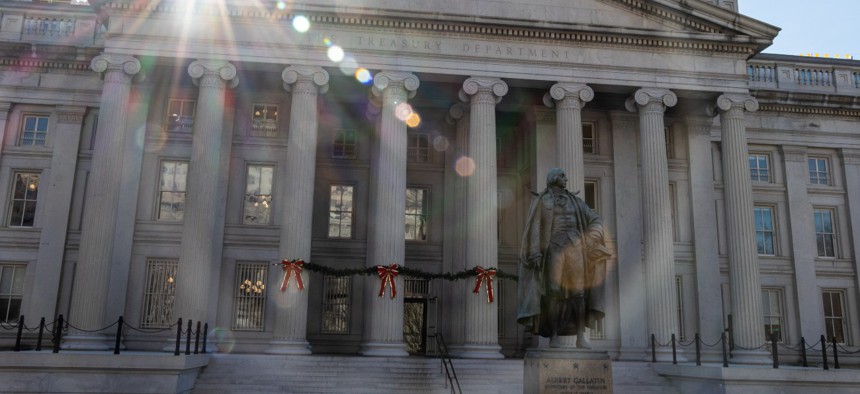
By JL IMAGES / Shutterstock.com
Architecture Groups Call on Biden to Revoke ‘Classical Buildings’ Executive Order
This is one of the many lame duck executive orders President Trump has issued recently.
Architecture organizations are imploring the incoming Biden administration to rescind the executive order President Trump issued on Monday that requires classical architecture to be the preferred style for federal buildings.
The directive applies to all federal courthouses, agency headquarters, federal public buildings in Washington, D.C., and all other federal public buildings that cost or are anticipated to cost over $50 million to design and build (excluding infrastructure projects and land ports of entry). A draft of the order, initially titled “Making Federal Buildings Beautiful Again,” was leaked to the publication the Architectural Record in February and many architects were angered at the prospect of it.
“New federal building designs should, like America’s beloved landmark buildings, uplift and beautify public spaces, inspire the human spirit, ennoble the United States, command respect from the general public, and, as appropriate, respect the architectural heritage of a region,” the executive order reads. “They should also be visibly identifiable as civic buildings and should be selected with input from the local community...Encouraging classical and traditional architecture does not exclude using most other styles of architecture, where appropriate. Care must be taken, however, to ensure that all federal building designs command respect of the general public for their beauty and visual embodiment of America’s ideals.”
The General Services Administration, which oversees federal real estate, will be in charge of implementing the order. If the GSA administrator seeks to approve a design for a federal building that does not meet the preferential criteria, he or she must give a detailed justification to the president (via the assistant to the president for domestic policy) no less than 30 days before GSA “could reject such design without incurring substantial expenditures.”
The order also establishes the President’s Council on Improving Federal Civic Architecture––which includes government officials and outside members–– that will submit a report to the GSA administrator no later than September 30, 2021, with recommendations on how to advance the mission of the executive order.
While the National Civic Art Society, a nonprofit that advocates for art and architecture in the classical style, supported the executive order, it was met with much resistance elsewhere, as was the case earlier this year.
“Civic spaces, whether they be federal buildings, parks or national monuments, should reflect the values of equality, diversity and inclusion to which we as a nation aspire,” said Torey Carter-Conneen, American Society of Landscape Architects CEO, in a statement on Monday. “Designers of these spaces should not be mandated by federal law to follow any specific style...We urge the incoming administration to rescind this order upon assuming office.”
The American Institute of Architects also protested the order. “Communities should have the right and responsibility to decide for themselves what architectural design best fits their needs, and we look forward to working with President-elect Biden to ensure that,” said Robert Ivy, AIA executive vice president and chief executive officer, in a statement on Monday. “Though we are appalled with the administration’s decision to move forward with the design mandate, we are happy the order isn’t as far reaching as previously thought.” When the draft was leaked in February, AIA members sent over 11,000 letters to the White House stating their opposition.
Michael Beschloss, presidential historian and author, said that, “Only in autocracies should it be a president’s business to issue this kind of command,” in a tweet on Monday. “Presume this diktat will last only 30 days.”
The Biden transition team did not respond for comment.
This executive order is one of the many on a variety of topics that Trump has issued during his lame duck period, which the Biden administration will have to decide what to do about.
This “task [is] made more complex by recent controversial directives that have reshuffled federal job classifications and sought to limit diversity, equity and inclusion training in government,” the nonprofit Partnership for Public Service outlined in a post on Tuesday. “The pandemic may also limit opportunities to issue executive orders on matters unrelated to the COVID crisis – even though new presidents often rely on such orders to achieve quick policy wins in a number of different areas.”







